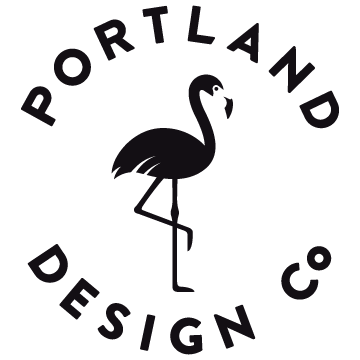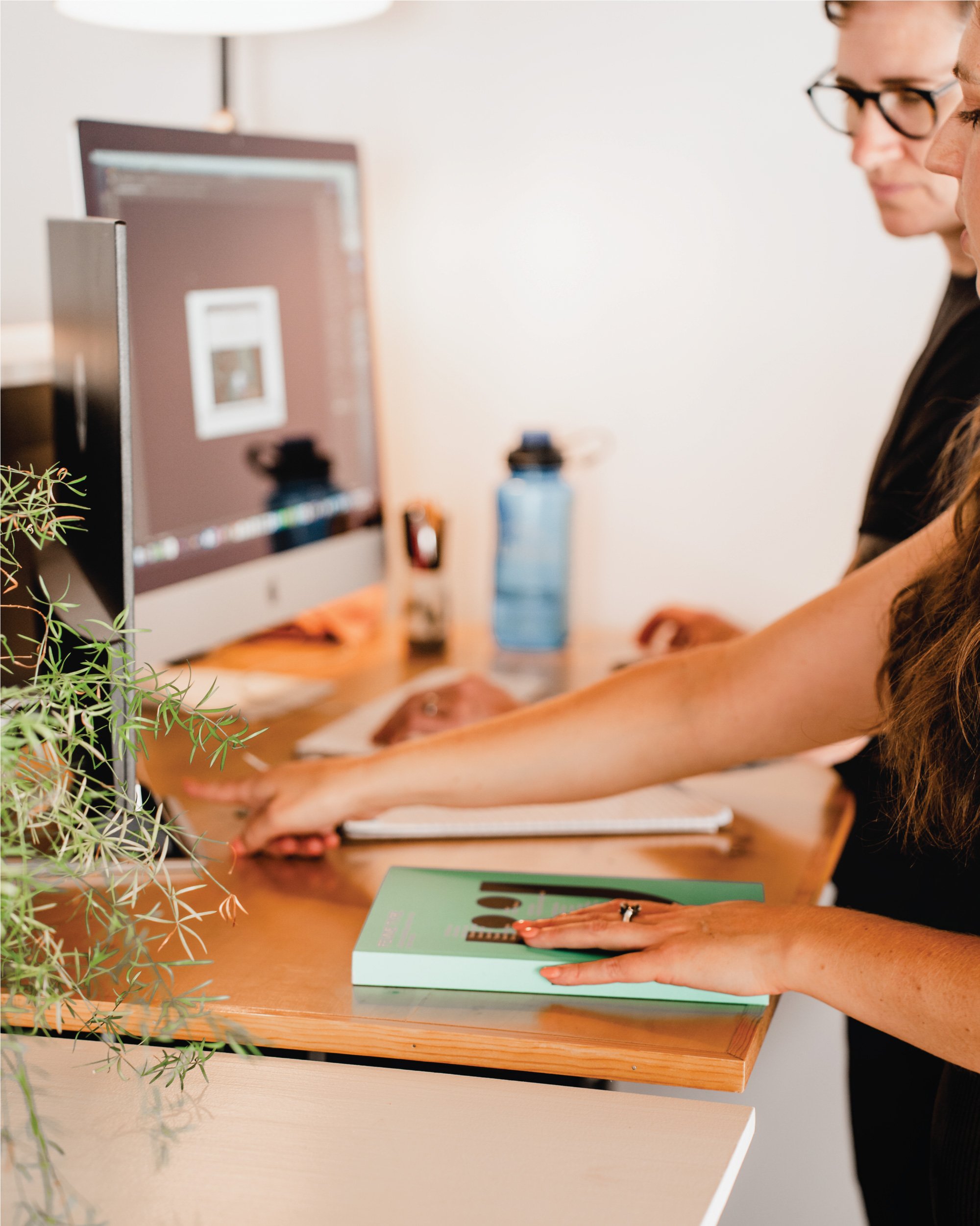Branding is an Investment
A strong visual identity is vital for businesses of all sizes. It helps companies build a competitive edge and long term recognition; creating a personal connection that draws people in and makes them want more. Professional branding should make you feel something. It’s not necessarily about communicating a promise that your brand will make people feel one way or another—but instead leaves your audience feeling something positive, familiar, unique, and memorable.
What’s the difference between a logo and a brand identity?
//
What’s the difference between a logo and a brand identity? //
A logo is a mark that represents a company.
Of all the visual parts that make up your identity, your logo is the strongest point of recognition. It doesn’t have to tell the world everything you do. It’s a quick tag or identifier. A red bullseye doesn’t reveal all the clothing, housewares, and food you can buy at Target. But it works as a stand-in for everything you know about Target: it’s a one-stop shop, it’s bold and unpretentious, and it’s inclusive. A good logo is simple, memorable, and engaging. A brand may have various logo lockups for differing layouts, but each logo asset clearly works the primary logo.
An identity is a brand’s collection of visual elements.
Identity is central to building a successful brand. It’s your brand’s ID card, a way to verify that you’re unique, credible, and consistent. Identity is a tangible way to communicate the same message every time—through your logo, colors, fonts, icons, letterhead, business cards, envelopes, website, packaging, uniforms, office aesthetics, promotional swag, social media, email blasts, signage, and more. We’ve shown a few examples for Giant Giants, a duo that’s been collaborating on stills, motion, and lifestyle photography for over a decade. The unique custom illustrations and pattern, branded print collateral, and animated Mailchimp assets each act as an extension of their unique visual identity.
At PDC, we may create one-off logos for smaller budgets, but we’re typically developing a full visual identity from start to finish—taking the entire brand scope into consideration. For example, a product-based company may reach out to us for a new logo. On the intro call, we learn they’re also seeking letterhead, employee apparel, and a packaging system designed to house each of their products. Our scope and cost will reflect these additional needs, and we’ll likely ask the client for packaging samples to test the logos at various sizes before finalizing the brand kit, create a unique illustration system for the packaging, or develop a more robust color palette to span the full range of products. We may reach out to their apparel printer for more information on design minimums for embroidery or screen printing. Our goal is to design for these needs from the start.
By Taylor Gonzalez
By Taylor Gonzalez
Before you start promoting and investing in marketing your business, it’s important to have a consistent and thoughtful visual brand identity to establish trust with your audience—and we know budgeting can play a big part in deciding which studio to work with. But high quality branding is a worthwhile investment. Opting to “save money” or design-it-yourself can end up costing you more in the long run. We begin every project asking “How is your company positioned among its competitors in the marketplace? Who is your target audience? What appeals to those people, and why? How is this logo the start of a complete identity system that can take your organization forward?” If questions like these are important to you, (and they should be), you can’t trust your identity design to just anyone. It’s important to relay as much information as possible to your design partner so they understand the full project scope, (which will help you understand the project costs).
Brand identity assets for HighByte, a tech company in Portland, ME
Brand identity assets for Maggie Mae’s, a family-owned café in Yarmouth, ME
It’s important to note that you might also be seeking marketing services—research and strategic brand planning aimed at aligning with your audience (and inspiring them to take action). Strategy can be useful before the visual identity is created, to help inform the direction your designer takes—and it can also be useful after the identity is developed, to help you consistently deploy the new brand identity, messaging, and more.
At PDC, our primary focus is on the visual identity but we ask a lot of strategic questions that you may not have considered before. We can draw on examples and insights that can give you a competitive edge without the added price tag of a marketing agencies’ services. But we also respect your time and energy, which is why we’re also focused in getting you what you need to keep moving—always on time and on budget. You need your investment in quality design to have an immediate impact, and we’re here to do what it takes to make that happen.
“A strong brand should be a priority for all businesses striving for success — and the proof is in the numbers. Brands that are consistently presented see an average revenue increase of 23%".” — Medium
Branding is an investment that increases familiarity and brand equity. By weaving a consistent visual identity and overarching message through every brand touchpoint—you’re creating emotional connections with your audience and making a positive impact on your return on investment.
Tips on your search for a brand identity designer.
-
Most studios and agencies will send a custom proposal based on your needs—so getting a range of quotes will help you meet your budget and give you a sense of how much larger agencies charge for this type of work ($50k quotes are not uncommon).
-
If you’re a high-risk and/or large company, you may consider teaming up with larger, full-service marketing and branding agency that will dive deep into strategy. A larger budget will be required to cover an agency’s greater overhead, and in general, turn-around time will be longer than with an independent studio or freelance designer. Be clear on the desired outcomes for your engagement. Months of meetings about brand ethos can be helpful for some companies, but they can bog down others who need deliverables quickly.
-
More expensive doesn’t always mean better work. It might just mean you’re getting a lot of extras that you don’t need—like paying an account manager’s salary—when all you really want is quality design work from a great designer, (not a team of managers). The top three things to consider are Price, Quality, Access. Do you want direct communication access to the designer creating your brand?
In conclusion, always balance price with quality of work and make sure you know what you’re getting. But know that good work is an investment into your brand—one that you’ll absolutely see a return on if it’s done right.









